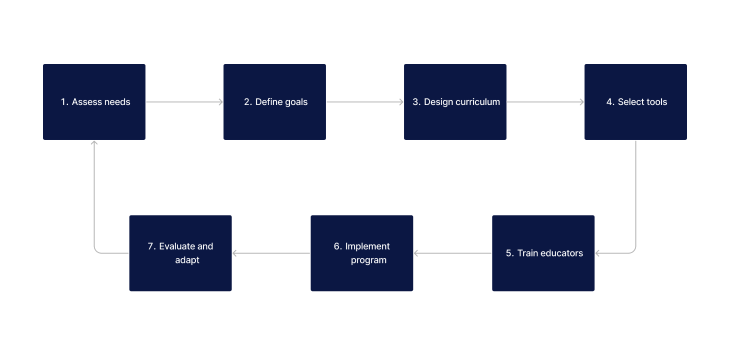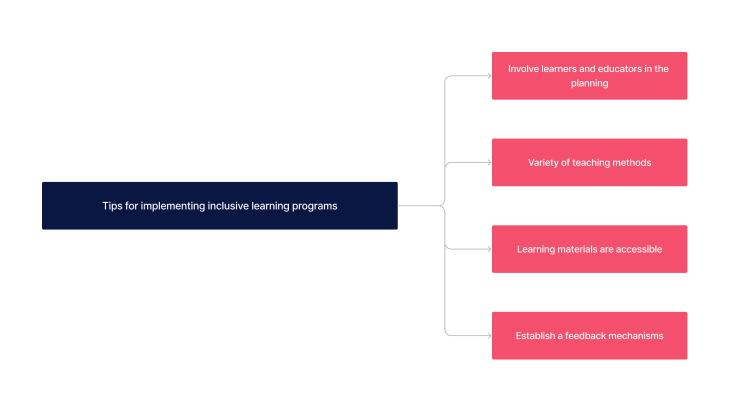What is Inclusive Learning?
Inclusive learning is an educational approach that aims to accommodate the diverse needs, backgrounds, and abilities of all participants. It involves creating learning environments and materials that enable everyone, including care worker training recipients, support workers, and healthcare professionals, to participate fully and effectively. This approach not only acknowledges but also values the diversity among learners, making it a cornerstone of modern education.
Why is Inclusive Learning Important?
Inclusive learning is vital in the healthcare sector because it ensures that health professionals are well-prepared to work in diverse healthcare settings. It fosters empathy, respect, and understanding among learners, which are crucial qualities in delivering high-quality care. Furthermore, inclusive education supports the learning and development of all students, including those with disabilities, by ensuring they have equal access to education opportunities, promoting equity within the healthcare system.
What are Inclusive Learning Programs?
Inclusive learning programs are educational strategies designed to support a diverse range of learning needs. They are characterised by the use of inclusive teaching methods, accessible content, and flexible learning environments that accommodate the unique needs of each learner. These programs are essential in healthcare education, where the complexity of health information and the diversity of both healthcare teams and patients require a broad and inclusive approach.
What are Inclusive Learning Programs in Healthcare?
In healthcare, inclusive learning programs are tailored to educate future healthcare professionals about the nuances of delivering care to a varied patient demographic. This includes training on cultural competency, communication skills, and accessibility issues, ensuring that health services are equitable and effective for all community members. Such programs are designed to bridge gaps in knowledge and practice, creating a healthcare workforce that is competent, empathetic, and inclusive.
Examples of Inclusive Learning Programs in Healthcare
Effective inclusive learning programs in healthcare are diverse and multifaceted. Here are a few examples:
- Simulation-based learning that includes scenarios catering to a wide range of physical abilities and health conditions, supporting the training of students with disabilities.
- Workshops on cultural competence for health professionals, focusing on understanding and respecting the cultural differences of patients in diverse healthcare settings.
- Online modules designed for accessibility, offering various formats to accommodate different learning styles and needs.
How Do You Design Inclusive Learning Programs?
Designing inclusive learning programs involves a deliberate and thoughtful approach to education that takes into account the diverse needs of all learners. Here are key considerations:
- Conducting a needs assessment to understand the diversity of your learners.
- Setting inclusive learning outcomes that reflect the skills and knowledge all learners should achieve.
- Choosing teaching strategies and technologies that support diverse learning needs and preferences.
Here are some resources that may be support your training program you develop:
- Not Just a Rainbow Tickbox: Best Practice for Addressing Diversity in Your Workforce Learning Strategy
- LGBTIQ+ Awareness in Aged Care
- LGBTQIA+ Health Considerations
- LGBTQI+ Older Adults in Aged Care
- 4 Key Actions to Advocate for LGBTQIA Patients
- Cultural Safety in Healthcare
Steps to Creating Inclusive Learning Programs in Healthcare

Creating inclusive learning programs in healthcare involves several key steps to ensure accessibility and effectiveness for all learners. These steps help in addressing the unique needs of healthcare professionals, support workers, and students with disabilities.
- Assessment of Needs: Begin by identifying the specific learning needs, preferences, and barriers faced by your audience. This may involve surveys, interviews, and reviewing current educational outcomes to understand where gaps and opportunities lie.
- Define Goals: Develop clear and measurable learning outcomes that reflect the diversity of learners. These outcomes should aim to equip healthcare professionals with the knowledge and skills to serve a varied patient demographic effectively.
- Design Curriculum: Create a curriculum that integrates inclusive teaching strategies, such as diverse case studies, adaptive learning technologies, and materials that are accessible to learners with different abilities and from various cultural backgrounds.
- Select Tools: Select learning management systems, content creation tools, and other educational technologies that support accessibility features, such as text-to-speech, closed captioning, and customisable user interfaces.
- Train Educators: Equip educators with the knowledge and skills to apply inclusive teaching practices. This includes training on using adaptive technologies, understanding diverse learner needs, and implementing accessible assessment methods.
- Implement Program: Implement the program with ongoing support and resources for both learners and educators. Ensure that all participants can access and engage with the learning materials effectively.
- Evaluate and Adapt: Regularly collect and analyse feedback from all stakeholders to identify areas for improvement. Use this feedback to make necessary adjustments to the curriculum, teaching methods, and technologies to enhance inclusivity and effectiveness.
Benefits and Negatives of Designing Inclusive Learning Programs in Healthcare
While inclusive learning programs offer numerous advantages for healthcare education, they also present certain challenges that need to be managed effectively.
| Aspect | Benefits | Negatives |
|---|---|---|
| Learning Outcomes | Enhanced engagement and comprehension among all learners. | May require more time and resources to achieve desired outcomes for everyone. |
| Accessibility | Improves access to education for students with disabilities and diverse learning needs. | Initial setup of accessible resources and tools can be costly and complex. |
| Diversity and Inclusion | Promotes a culture of respect and understanding within healthcare settings. | Continuous effort required to update and maintain inclusivity in program content. |
| Preparation for Real-World Practice | Better prepares healthcare professionals for working in diverse environments. | May need to overcome resistance or skepticism from traditional educators or participants. |
Tips for Designing Inclusive Learning Programs for Healthcare Education

Successfully implementing inclusive learning programs requires thoughtful planning and ongoing management. Here are practical tips to enhance the effectiveness of these programs:
- Involve learners and educators in the planning process to ensure their needs and concerns are addressed.
- Use a variety of teaching methods to cater to different learning styles and preferences.
- Ensure all learning materials are available in accessible formats.
- Provide regular training and support for educators on inclusive teaching techniques and tools.
- Establish a feedback mechanism for continuous improvement of the program.
Need an LMS that supports inclusive training program development?
Contact Ausmed today and see how we can support your organisation!
Related Resources
- Mandatory Training: How an LMS can help you meet requirements
- LMS in Healthcare: The Roles, Benefits and Pros and Cons
- LMS in Disability Care: The Roles, Benefits and Pros and Cons
- What Is the Role of an LMS in Aged Care?
- What Are Learning Analytics?
- How to Create a Culture of Continuous Learning
- Guide to Compliance Training (for Healthcare Managers)
- Guide to Building a Competency Framework for Skill Development
- How to Manage an Effective Staff Training Program
- Identifying Skills Gaps with Learning Analytics
- How Do I Use Learning Analytics for Competency Mapping?
- A Guide to Personalised Learning in Healthcare
Conclusion
Designing inclusive learning programs in healthcare is a dynamic and ongoing process that requires dedication, innovation, and a deep understanding of the diverse needs of learners. By prioritizing inclusivity, healthcare education managers can ensure that their programs prepare all learners for the complexities of modern healthcare delivery, ultimately leading to improved patient care and health outcomes.
References
- Marjadi B, Flavel J, Baker K, Glenister K, Morns M, Triantafyllou M, Strauss P, Wolff B, Procter AM, Mengesha Z, Walsberger S, Qiao X, Gardiner PA (2023). Twelve Tips for Inclusive Practice in Healthcare Settings. Int J Environ Res Public Health; 20(5):4657. doi: 10.3390/ijerph20054657. PMID: 36901666; PMCID: PMC10002390.
- Corcoran, T., (2012) Health inclusive education, International Journal of Inclusive Education, 16:10, 1033-1046, DOI: 10.1080/13603116.2010.538867
- Mykyteichuk, K., Perepeliuk, I., Perkhun, L., Bondarenko, Y., Yakovleva, S., & Sydoruk, I. (2022). Future Teacher Training for Work in the Inclusive Education Framework. Revista Romaneasca Pentru Educatie Multidimensionala, 14(2), 244-256. https://doi.org/10.18662/rrem/14.2/578



